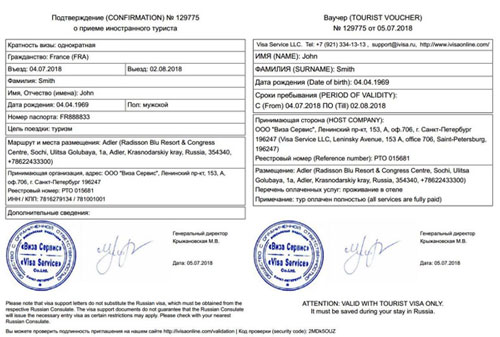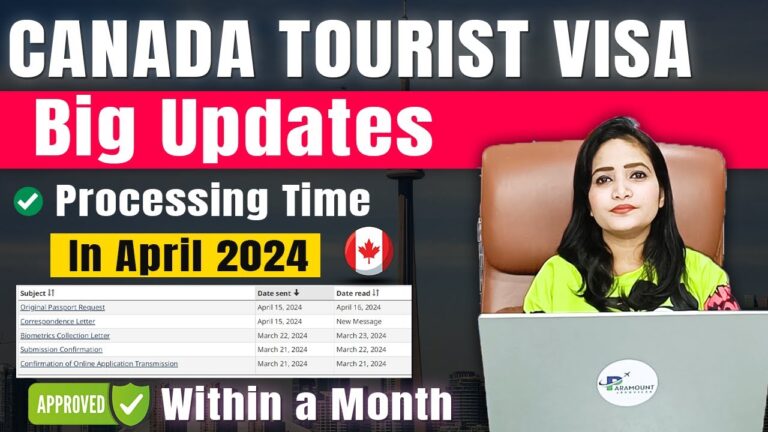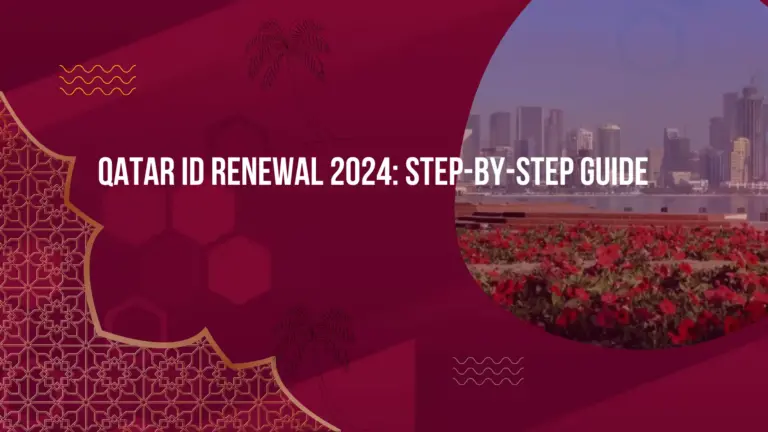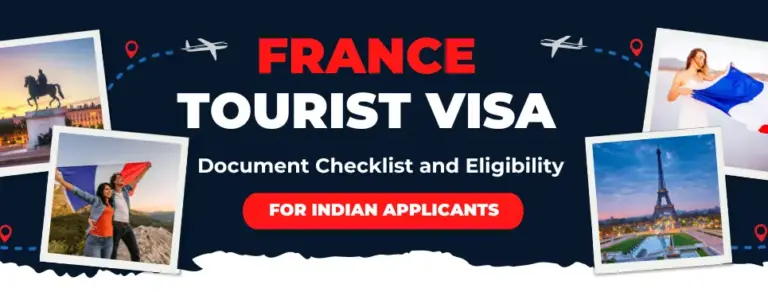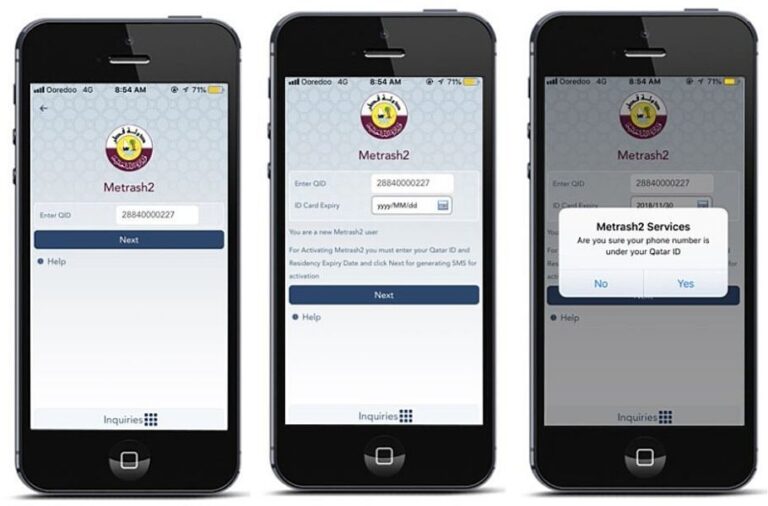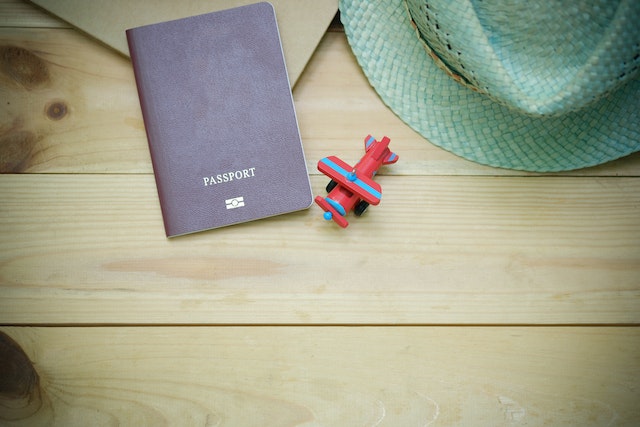Your Ticket to Adventure: Know the Essential Tourist Visa Requirements
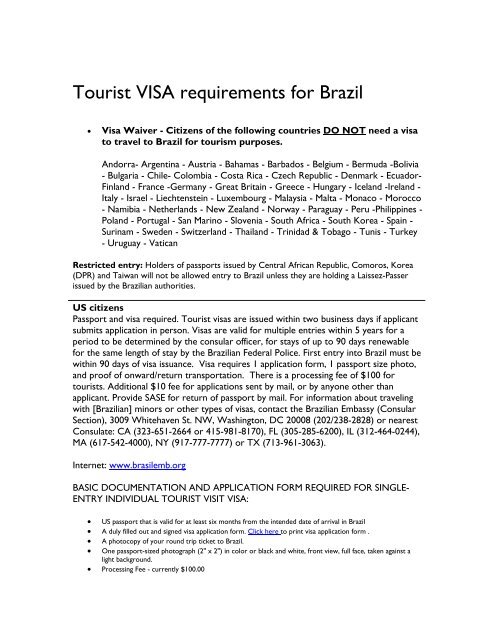
Understanding Tourist Visas
Navigating the world of tourist visas can be a complex task, but understanding the basics and the different types available can help streamline the process for you.
Basics of Tourist Visas
A tourist visa is an official document issued by a country’s government that allows you to enter and stay in the country for a temporary period primarily for tourism purposes. Tourist visas are usually non-immigrant visas, meaning they do not allow you to live permanently in the country or work.
For example, the B-1/B-2 visitor visa allows people to temporarily travel to the United States for business (B-1) or pleasure, medical treatment, and activities of a fraternal, social, or service nature (B-2) (U.S. Travel Docs). These visas typically allow you to stay in the country for up to 180 days, although the exact duration can vary based on the specific terms of your visa.
Types of Visitor Visas
There are various types of visitor visas tailored to the specific needs and purposes of the traveler. Here are some common types:
Single-Entry Tourist Visa
A single-entry tourist visa allows you to enter the destination country only once. After you leave, you cannot re-enter on the same visa, regardless of whether the visa’s validity period has expired or not. More details on single-entry visas can be found on our page about the single-entry tourist visa.
Multiple-Entry Tourist Visa
A multiple-entry tourist visa allows you to enter and exit the destination country multiple times within its validity period. This type of visa is convenient for travelers who plan to visit multiple neighboring countries or return home before coming back to the destination country. To learn more, visit our multiple-entry tourist visa page.
| Visa Type | Validity Period | Number of Entries | Maximum Stay |
|---|---|---|---|
| Single-Entry Tourist Visa | Usually 3 to 6 months | One-time entry | Varies (15-90 days) |
| Multiple-Entry Tourist Visa | Up to 10 years | Multiple entries | Up to 180 days per visit |
Figures typically representative of B-1/B-2 visas (Boundless)
B-1/B-2 Visitor Visa
This combined category of visa is issued for travel to the United States. The B-1 visa is used for short business trips, while the B-2 visa is intended for tourism, vacations, visiting friends and family, medical treatments, and social events without receiving pay (Boundless). This visa is intended for temporary visits rather than long-term stays.
Short-Stay Visa (Schengen Visa)
Designed for short stays in European countries that are part of the Schengen Area, this visa allows you to travel within the Schengen Zone for up to 90 days within a 180-day period for tourism, business, or family visit purposes.
Each type of tourist visa comes with its own set of requirements and application procedures. It’s important to thoroughly research and understand these requirements to ensure a smooth travel experience. For more detailed information on different visa requirements, you can explore our article about visa on arrival countries for US citizens.
Applying for a Tourist Visa
Understanding the steps involved in applying for a tourist visa is essential for a smooth process. This section will guide you through completing Form DS-160, identifying the necessary documents, and ensuring your visa photo meets the required standards.
Completing Form DS-160
When applying for a B-1/B-2 travel visa to the United States, Form DS-160 is a crucial part of the process. You do not need to upload any documents when completing this form, aside from a digital photo. However, you will need to reference various biographical questions about yourself, your family, employment, and travel history to complete the DS-160 questions (Boundless).
Make sure to fill out all sections accurately and thoroughly, as incomplete or incorrect information can delay your visa application.
For more details on the DS-160 form, visit our page on tourist visa application form.
Document Requirements
Gathering the required documents is an essential step in the visa application process. Although you do not need to upload documents when completing Form DS-160, you must bring several key documents to your visa interview. These typically include:
- Passport: Must be valid for at least six months beyond your intended stay.
- Form DS-160 confirmation page: Proof that you have completed the online form.
- Visa appointment confirmation: Printed confirmation of your scheduled visa interview.
- Supporting documents: Evidence of ties to your home country, such as employment verification, property ownership, or family connections.
For a comprehensive list, refer to our tourist visa checklist.
Visa Photo Guidelines
The visa photo is an important part of your application, and it must meet specific requirements to be accepted. The U.S. Department of State recommends using a professional visa photo service to ensure compliance with these guidelines. Here are the basic requirements:
- Size: 2 x 2 inches (51 x 51 mm)
- Format: Color photo taken within the last 6 months
- Position: Full face, front view with a plain white or off-white background
- Clothing: Normal street attire. Uniforms should not be worn, except for religious clothing worn daily.
- Eyewear: Glasses must not be worn in the photo.
To avoid any issues, visit our detailed guide on tourist visa photo requirements.
| Requirement | Detail |
|---|---|
| Size | 2 x 2 inches (51 x 51 mm) |
| Format | Color, taken within the last 6 months |
| Background | Plain white or off-white |
| Position | Full face, front view |
| Eyewear | No glasses |
| Clothing | Normal street attire |
By following these steps and ensuring all your documents and photo meet the requirements, you will be well-prepared for your visa application process. If you need further information on any part of the application, visit our pages on how to apply for tourist visa and documents for visa interview.
Visa Interview and Processing
Navigating the visa interview and processing phase can be daunting, but understanding the essential steps can ease the experience. Here, we cover interview preparation, wait time considerations, and expedited interview requests for tourist visa requirements.
Interview Preparation
Preparation for your visa interview is crucial. Here are some essential steps:
- Gather Documents: Assemble all the necessary documents, including your tourist visa application form, passport, visa photo requirements, and supporting documents.
- Practice Common Questions: Be ready to answer common questions about your travel plans, financial status, and ties to your home country. For more tips, visit tourist visa interview tips.
Make sure your photographs meet the U.S. government’s requirements (Boundless). Consider using a professional visa photo service to ensure compliance.
Wait Time Considerations
Wait times for visa interviews can vary based on the U.S. embassy or consulate. It’s advisable to check the estimated wait time regularly, as it can change weekly based on workload and staffing (Travel.State.Gov).
| Location | Estimated Wait Time (Days) |
|---|---|
| New York | 15 |
| Los Angeles | 10 |
| Chicago | 8 |
| Houston | 12 |
| Miami | 20 |
These estimates do not guarantee immediate appointments. Plan ahead based on the current estimated wait times provided by the U.S. Department of State.
Expedited Interview Requests
In urgent situations like funerals, medical emergencies, or imminent school start dates, you may request an expedited interview (Travel.State.Gov). Each consular section may have different processes for this.
Steps to Request Expedited Interviews:
- Check Eligibility: Ensure your situation qualifies for expedited processing.
- Provide Proof: Submit documentation proving the urgency (e.g., medical reports, funeral notices, or school enrollment letters).
- Submit Request: Follow the specific instructions of your local U.S. embassy or consulate to submit your request.
For more comprehensive guidance on expedited processing, visit our section on expedited tourist visa processing.
By following these steps for preparation, understanding wait times, and knowing how to request expedited interviews, you can navigate the tourist visa interview and processing phase with confidence. Additional resources, such as how to apply for tourist visa and tourist visa checklist, can provide further assistance.
Visa Application Procedures
Navigating through the visa application process is essential for securing your tourist visa. The procedures cover interview waivers, administrative processing, and post-interview steps to ensure a smooth and successful application.
Interview Waiver
Applicants eligible for an interview waiver have the convenience of submitting their passport and required documents at the U.S. embassy or consulate without the need for an in-person interview. This can significantly streamline the process for those renewing their visas or meeting specific criteria. The wait time for the interview waiver does not include the adjudication time or the mailing time for passports and documents (Travel.State.Gov).
Administrative Processing
In some cases, your visa application may require additional administrative processing. This step involves further review of your application and may be necessary due to various reasons, including background checks or the need for additional documentation. The duration of administrative processing varies and depends on individual circumstances. Thus, it is recommended to apply well in advance of your travel date to allow sufficient time for any necessary administrative processing (Travel.State.Gov).
Post-Interview Procedures
Once you have completed your visa interview, there are several post-interview steps to be aware of. After the interview, the consular officer will either approve or deny your visa application. If approved, you will be informed about the timeline for receiving your visa.
For urgent situations such as funerals, medical emergencies, or school start dates, consular sections may expedite interview dates. The process to request expedited processing may differ by location, and proof of the urgent situation is required (Travel.State.Gov).
| Post-Interview Stage | Description |
|---|---|
| Visa Approval | Notification and timeline guidance on receiving the visa. |
| Visa Denial | Information on the reason for denial and possible next steps. |
| Administrative Processing | Additional background checks or documentation may be required. |
| Document Return | Your passport and visa will be mailed to you or ready for pick-up based on your chosen method. |
For further guidance on visa application procedures, consider visiting related articles on how to apply for tourist visa, tourist visa checklist, or tourist visa processing time.
Understanding each step and preparing accordingly can enhance your chances of a successful tourist visa application. For more specific needs and scenarios, refer to our other detailed guides like us tourist visa for parents or request expedited processing detailed on expedited tourist visa processing.
Travel Visa Extension and Adjustment
Visa Extension Process
If you need more time than your initial visa allows, you may apply for a visa extension. It’s crucial to apply before your current visa expires to avoid becoming undocumented. To extend your stay, you must:
- Complete Form I-539 (Application to Extend/Change Nonimmigrant Status).
- Attach supporting documents such as your passport, Form I-94 (Arrival/Departure Record), proof of funds, and a letter explaining why you need an extension.
- Pay the required fee.
Submitting these documents and the form is primarily done through the U.S. Citizenship and Immigration Services (USCIS). For more details on the extension process, refer to the tourist visa extension process.
| Document | Purpose |
|---|---|
| Form I-539 | Application for extension |
| Form I-94 | Proof of entry and duration of stay |
| Letter of Explanation | Reason for extension |
| Proof of Funds | Financial stability |
Adjustment of Status
Adjustment of status allows you to become a lawful permanent resident (Green Card holder) while in the U.S. This is often applicable to immediate relatives of U.S. citizens, such as spouses and children under 21.
To qualify for adjustment under section 245(a) of the Immigration and Nationality Act (INA), you must have been inspected or paroled upon entry and must not have any disqualifying grounds of inadmissibility (Gardner & Mendoza, PC).
The steps to adjust your status include:
- File Form I-485 (Application to Register Permanent Residence or Adjust Status).
- Submit Form I-130 (Petition for Alien Relative) by the U.S. citizen relative.
- Provide supporting documentation and pay the associated fees.
- Attend a biometrics appointment and interview (if required).
| Document | Purpose |
|---|---|
| Form I-485 | Adjustment of status application |
| Form I-130 | Petitioner form (U.S. citizen relative) |
| Biometrics Appointment | Fingerprinting and background check |
Changing Visa Status to Green Card
Changing your tourist visa status to a Green Card involves several steps and eligibility requirements. Immediate relatives of U.S. citizens often have an easier path, as visas are immediately available for them. Under the LIFE Act (section 245(i) of the INA), you may adjust status even with certain violations, such as unauthorized work, provided specific conditions are met (Gardner & Mendoza, PC).
Common eligibility scenarios include:
- Marriage to a U.S. citizen during your stay on a tourist visa.
- Meeting all admissibility requirements.
- Filing required forms: Form I-485, Form I-130, and an affidavit of support.
In some cases, you may also need to file Form I-765 (Application for Employment Authorization) to legally work while your application is processed.
For more comprehensive guidance, visit our section on tourist visa extension process or consider consulting an immigration attorney.
By understanding the procedures and requirements for visa extensions and status adjustments, you can better navigate the complexities of U.S. immigration law. Check out our additional resources on how to apply for tourist visa and tourist visa financial requirements for more information.
Financial Requirements for Tourist Visas
When applying for a tourist visa, meeting the financial requirements is essential. These requirements ensure that applicants have the means to support themselves during their stay without relying on public funds. This section will cover the key financial prerequisites, including bank balance verification, income proof submission, and providing financial statements.
Bank Balance Verification
Your bank balance plays a crucial role in your tourist visa application. While there is no officially mandated minimum balance, it must reflect your capacity to cover travel and living expenses throughout your stay. Generally, having a balance between $6,000 to $10,000 is advisable, as it demonstrates financial stability.
| Visa Type | Recommended Bank Balance ($) |
|---|---|
| US Tourist Visa | 6,000 – 10,000 |
| UK Tourist Visa | 7,500 – 10,000 |
| Schengen Visa | 4,000 – 8,000 |
For more detailed requirements, visit our page on tourist visa financial requirements.
Income Proof Submission
Proof of regular income is another critical aspect. You must submit documents such as payslips, income tax returns, or any documentation that shows a continuous stream of money (Immigration Advice Service). These documents confirm your financial capacity to cover trip expenses, helping to strengthen your visa application.
Documents that can serve as proof of income include:
- Recent payslips (last 3-6 months)
- Income tax returns
- Bank statements indicating salary deposits
- Employment letter stating your current salary
For more details on necessary documentation, refer to our guide on tourist visa support documents.
Providing Financial Statements
Financial statements serve as a comprehensive record of your transactions and financial stability. The US authorities typically require bank statements for the previous six months. These statements should show a balance that can comfortably cover the duration of your intended stay.
When preparing your financial statements, ensure they include:
- Monthly account summaries
- Details of deposits and withdrawals
- Any large transactions explained
- Consistent stream of income reflected
| Required Documents | Description |
|---|---|
| Six Months’ Bank Statements | Demonstrates financial stability and ability to afford the trip |
| Payslips | Proof of steady income |
| Income Tax Returns | Verification of financial and employment status |
It’s important to provide accurate and genuine documents. False information can lead to visa denial, a potential ban from future applications, or even criminal charges. Check out our complete tourist visa checklist to ensure you have all the necessary documents.
Understanding these financial requirements and providing accurate documentation will help you meet the tourist visa criteria and increase the chances of your application being successful. For more resources on how to prepare, explore our tourist visa application process and related topics.
Vaccination Requirements for Visas
Medical Examination Details
To fulfill tourist visa requirements, a medical examination is often necessary. For visa-related purposes, a panel physician will conduct this medical exam. During the exam, the physician reviews all your vaccination records and records the vaccination history on Form I-693 (Report of Medical Examination and Vaccination Record) (Boundless).
Mandatory Vaccination Verification
Certain vaccinations are mandatory before the issuance of an immigrant visa. The physician must verify that you meet these vaccination requirements. If you lack any of the required vaccinations, the physician will administer the vaccines during the examination. Alternatively, you can opt to get the required vaccines from a private healthcare provider and bring proof of vaccination to the examination. For a list of required vaccinations, you may need to check the specific guidelines for your targeted visa category.
Cost Responsibilities
Understanding the cost responsibilities for the medical examination and required vaccinations is crucial. All costs associated with the medical exam and necessary vaccines fall on you. This means you should prepare financially for these expenses as part of the visa application process.
| Expense | Estimated Cost |
|---|---|
| Medical Examination | $200 – $500 |
| Vaccinations | $25 – $150 per dose |
Remember, these costs can vary based on the country, physician, and specific medical needs. For more information about the application process, visit our guide on how to apply for a tourist visa.
Special Circumstances and Options
Understanding your options when it comes to tourist visas is important for making informed decisions about your travel and stay. Here are some special circumstances and options to consider:
B-1 Visa Application
The B-1 visa is intended for short business trips. It allows you to attend business meetings, participate in professional conventions, and engage in other business-related activities without receiving pay in the U.S. For many travelers, a B-1/B-2 visa is issued together, enabling them to travel both for business and pleasure.
| Visa Type | Purpose |
|---|---|
| B-1 | Short Business Trips |
| B-2 | Tourism, Vacation, Visiting Family, Medical Treatment |
| B-1/B-2 | Business and Pleasure |
For more details on the B-2 visa, also known as the tourist visa, check out our article on us tourist visa for parents.
Adjusting Status to Green Card
If you enter the U.S. on a tourist visa and decide to stay longer, it’s possible to adjust your status to become a lawful permanent resident (green card holder). This can be done through the Adjustment of Status process if you’re already in the U.S or via consular processing if you are outside the U.S..
Immediate relatives of U.S. citizens, such as spouses, unmarried children under 21 years old, and parents, are eligible to adjust their status more quickly since visas are immediately available for these family members (Gardner & Mendoza, PC).
Exceptions and Considerations
There are specific exceptions and considerations to keep in mind when using a tourist visa:
-
Marriage to a U.S. Citizen: One common scenario for adjusting status involves entering the U.S. on a tourist visa and getting married to a U.S. citizen. The process involves entry inspection, a petition by the U.S. citizen spouse, and meeting admissibility requirements.
-
Intended Purpose and Duration: The B-1/B-2 visa is designed for temporary visits, typically for business, tourism, or medical treatment. It’s not meant for long-term living in the U.S. or spending the majority of your time in the country (Boundless).
For more detailed guidance on the specific requirements for each type of visa and the process of adjusting your status, visit how to apply for tourist visa, tourist visa application form, and tourist visa sponsor. These internal resources provide comprehensive information to help you navigate the visa application and adjustment process successfully.

